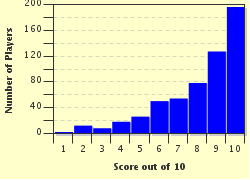Quiz Answer Key and Fun Facts
1. Captain Cook named this distinctively shaped mountain on the east coast of Australia to alert future sailors of the danger of the nearby reefs in the ocean. What did he call it?
2. Believe it or not this is a river. It's located in the centre of our very dry continent near the inland town of Alice Springs. For the most part, it's completely dry. When it rains however, it's a beautiful sight, and it can be dangerous. What is its name?
3. These caves west of Sydney are the oldest open caves in the world. With over 40 kilometres of levels and walkways to explore, they are comprised of an amazing array of strange and beautiful calcite formations. What are these caves called?
4. This horrible desolate site in the middle of nowhere, at a place called Coober Pedy, is the world's largest suppliers of a much valued gem. What is this gem?
5. This photograph, taken decades before tourists and developers discovered this lovely area, is of Australia's most easterly point. To see it now and compare it to this rough beginning is absolutely astonishing. Named after the grandfather of a reckless and profligate English poet, what is the name of this most easterly point of Australia?
6. This is an image of one of Australia's oldest wine growing areas. Located in South Australia, many of this country's largest and most esteemed wineries are established here. What is this valley's name?
7. These eerie limestone formations are found over a broad area in the Nambung National Park, Western Australia. With a name suggesting height, what are they called?
8. The Tasman Peninsula is connected to the mainland of the state of Tasmania by an isthmus that is 400 metres long and 30 metres wide. What is the bird associated name of this isthmus?
9. Located in the beautiful Blue Mountains of New South Wales, this group of three unusually shaped rocks goes by which family name?
10. This bay, located on the most westerly point of Australia, is listed as a World Heritage site. Miles away from any major area of civilisation, it is named after a ferocious sea creature. What is its name?
Source: Author
Creedy
This quiz was reviewed by FunTrivia editor
Tizzabelle before going online.
Any errors found in FunTrivia content are routinely corrected through our feedback system.


